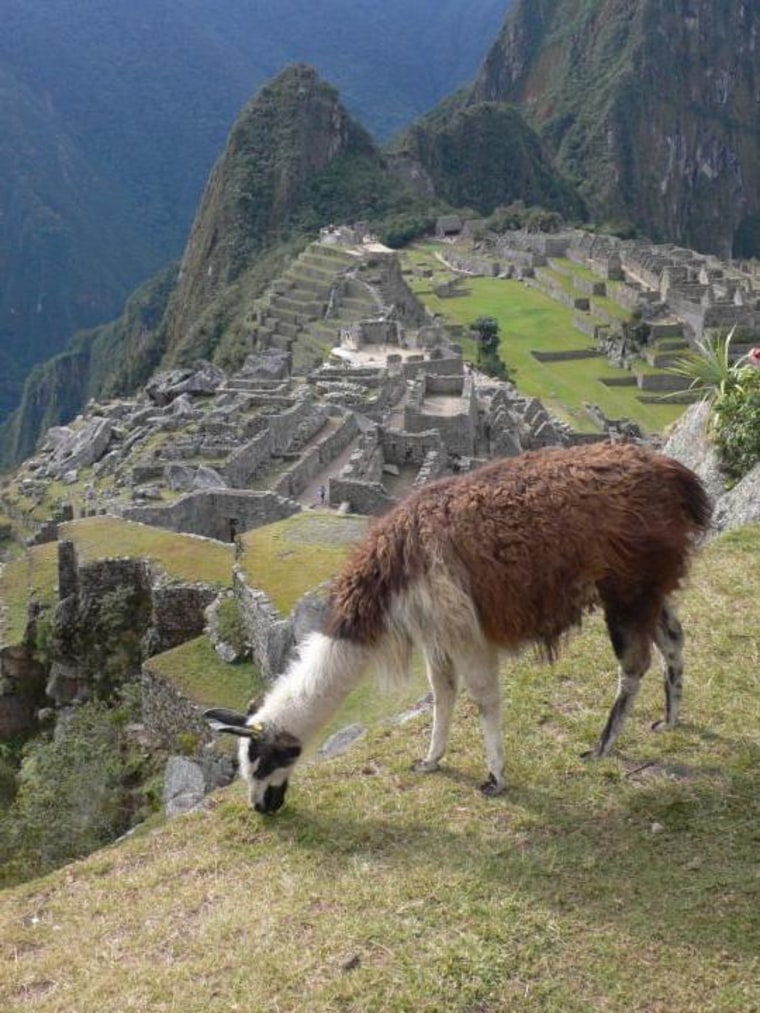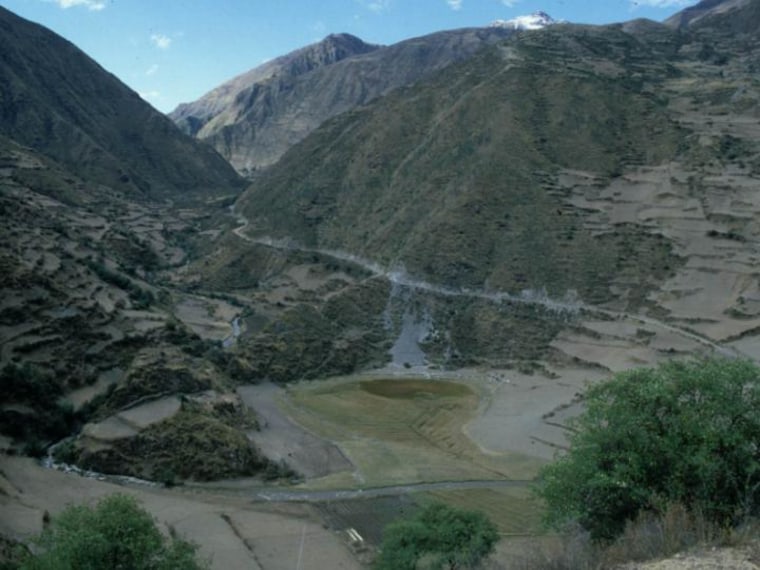
The seeds of the Inca Empire were planted about 2,700 years ago when a warm spell combined with piles of llama excrement allowed maize agriculture to take root high up in the South American Andes, according to a new study.
"They were constructing fields and weeding them. And probably trading took off, made possible by llama caravans transporting goods, such as maize, coca leaves, salt and a ceremonial product called cinnabar," Alex Chepstow-Lusty of the French Institute of Andean Studies in Lima told me Sunday in an email.
The finding is inferred by a record of pollen and mites in a core of mud taken from a small lake located at about 11,000 feet up in the Andes surrounded by agricultural terraces and next to an ancient trading route that connected tropical forest and mountain communities.
The Laguna Marcacocha core extends back over 4,200 years. The pollen tells Chepstow-Lusty about what plants were growing around the lake when. Mites eat plant detritus such as that found in excrement. "The more excrement, the more mites living in the soils close to the lake," he explained.
Record extended
In previous research based on the core, Chepstow-Lusty showed how a period of global warming starting around A.D. 1100 allowed the expansion of the Inca Empire by allowing the growth of maize, known in the U.S. as corn, to feed armies of people constructing roads and monuments such as Machu Picchu.
The new research, published in the June issue of the journal Antiquity, extends the record back several more thousand years and pinpoints when agricultural and trade first took off in Andes around Cuzco, which became the seat of the Inca Empire.
Prior to cultivating corn, humans were eating wild quinoa, part of the spinach family. "Quinoa favors colder and drier conditions than maize, and does not provide the calories that maize does," Chepstow-Lusty said.

In addition to quinoa, potatoes were also likely a major source of calories, but potato pollen is difficult to discern in the lake core. However, other researchers suggest that the weight and perishable nature of potatoes made them useful only to local communities.
Maize is easily transported and stored, which makes a surplus possible that can be extracted as payment to a political system. Hence maize, like barley and wheat in the Near East, is considered essential for the development of civilization in the Americas.
However, in order to grow the grain at large enough scale to feed the armies needed to build the Inca Empire, a source of organic fertilizer was needed, Chepstow-Lusty argues. That, he said, was found in llama excrement, which was in abundance at the same time maize appeared in the record.
"Camelids defecate communally, so their dung can be accumulated in a small area and constitutes a regular supply that is easily exploitable by the local population," he writes in Antiquity.
"Hence it is no coincidence that the shift to agriculture corresponds with a distinct peak in oribatid mites, suggesting increased pastoralism, greater availability of excrement and potentially a major trading network."
Periodic warming
From about 700 B.C., the lake core record paints a picture of warm, dry spells in the high Andes about every 500 years that correspond with major societal changes. When the climate cooled, societies would retreat down slope, returning once it warmed again.
According to Chepstow-Lusty, the sustained warming beginning around A.D. 1100 allowed populations to move even higher up in the Andes "and grow a lot more maize and support even bigger populations."
Maize, in addition to being a source of food, is the basis of chicha, a corn-based beer that was central to the ceremonial life of Native American cultures.
"I am sure ritual ceremonies began on a large scale at the same time from 2,700 years ago and helped bind the members of different groups together, even libations for the dead and the gods," Chepstow-Lusty added.
More stories on the Inca:
- Inca children 'fattened up' before sacrifice
- Global warming may have aided Inca Empire
- 'Lost city of the Incas' was not a true city
- Possible pattern found in Incan strings
John Roach is a contributing writer for msnbc.com. Connect with the Cosmic Log community by hitting the "like" button on the Cosmic Log Facebook page or following msnbc.com's science editor, Alan Boyle, on Twitter (@b0yle).